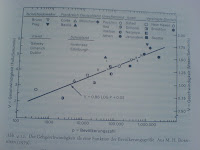 Mark Billinghurst presented an interesting history of augmented reality and he showed clearly that camera phones are the platform to look out for. He reminded us that currently the 3D performance of mobile phones is similar to the most powerful 3D graphics cards show 15 years ago at SIGGRAPH. Looking back at Steven Feiner’s backpack [1] – the first augmented reality system I saw – can tell us that we should not be afraid to create prototypes that may be a bit clumsy if they allow us to create a certain user experience and for exploring technology challenges.
Mark Billinghurst presented an interesting history of augmented reality and he showed clearly that camera phones are the platform to look out for. He reminded us that currently the 3D performance of mobile phones is similar to the most powerful 3D graphics cards show 15 years ago at SIGGRAPH. Looking back at Steven Feiner’s backpack [1] – the first augmented reality system I saw – can tell us that we should not be afraid to create prototypes that may be a bit clumsy if they allow us to create a certain user experience and for exploring technology challenges.
In an example video Mark showed how they have integrated sensor information (using particle computers) into an augmented reality application. Especially for sensor-network applications this seems to create interesting user interface options.
One reference on to robust outdoor tracking done at Cambridge University [2] outlines interestingly how combining different methods (in this case GPS, inertial, computer vision and models) can move location techniques forward. This example shows that high precision tracking on mobile devices may not be far in the future. For our application led research this is motivating and should push us to be more daring with what we assume from future location systems.
 Mark argue to look more for the value of experience – the idea is basically that selling a user experience is of higher value than selling a service or a technology. This view is at the moment quite common – we have seen this argument a lot at CHI2008, too. What I liked with Mark’s argument very much is that he sees it in a layered approach! Experience is at the top of a set of layers – but you cannot sell experience without having technology or services and it seems a lot of people forget this. In short – no experience design if you do not have a technology working. This is important to understand. He included an example of interactive advertisement (http://www.reactrix.com/) which is interesting as it relates to some of the work we do on interactive advertisement (there will more as soon as we have published our Mensch und Computer 2008 paper).
Mark argue to look more for the value of experience – the idea is basically that selling a user experience is of higher value than selling a service or a technology. This view is at the moment quite common – we have seen this argument a lot at CHI2008, too. What I liked with Mark’s argument very much is that he sees it in a layered approach! Experience is at the top of a set of layers – but you cannot sell experience without having technology or services and it seems a lot of people forget this. In short – no experience design if you do not have a technology working. This is important to understand. He included an example of interactive advertisement (http://www.reactrix.com/) which is interesting as it relates to some of the work we do on interactive advertisement (there will more as soon as we have published our Mensch und Computer 2008 paper).
His further example on experience was why you value a coffee at Starbucks at 3€ (because of the overall experience) reminded me of a book I recently read – quite a good airline/park read (probably only if you are not an economist) – makes the world a bit understandable [3].
Build enabling technologies and toolkits as means to improve one’s citation count was one of Mark’s recommendations. Looking back at our own work as well as the work of the Pervasive/Ubicomp community there is a lot of room for improvement – but it is really hard to do it …
[1] S. Feiner, B. MacIntyre, T. Höllerer, and T. Webster, A touring machine: Prototyping 3D mobile augmented reality systems for exploring the urban environment. Proc. ISWC ’97 (First IEEE Int. Symp. on Wearable Computers), October 13-14, 1997, Cambridge, MA. Also in Personal Technologies, 1(4), 1997, pp. 208-217, http://www1.cs.columbia.edu/graphics/publications/iswc97.pdf, http://www1.cs.columbia.edu/graphics/projects/mars/touring.html
[2] Reitmayr, G., and Drummond, T. 2006. Going out: Robust model-based tracking for outdoor augmented reality. In Proceedings of IEEE ISMAR’06, 109–118.http://mi.eng.cam.ac.uk/~gr281/docs/ReitmayrIsmar06GoingOut.pdf, http://mi.eng.cam.ac.uk/~gr281/outdoortracking.html
[3] Book: Tim Harford. The Undercover Economist. 2007. (German Version: Ökonomics: Warum die Reichen reich sind und die Armen arm und Sie nie einen günstigen Gebrauchtwagen bekommen. 2006.)
 Over lunch I met with Heiko to discuss the progress of his thesis and fishing for new topics as they often come up when writing 😉 To motivate some parts of his work he looked at behavioral research that describes how people use their eyes in communication. In [1] interesting aspects of human behavior are described and explained.
Over lunch I met with Heiko to discuss the progress of his thesis and fishing for new topics as they often come up when writing 😉 To motivate some parts of his work he looked at behavioral research that describes how people use their eyes in communication. In [1] interesting aspects of human behavior are described and explained. 


